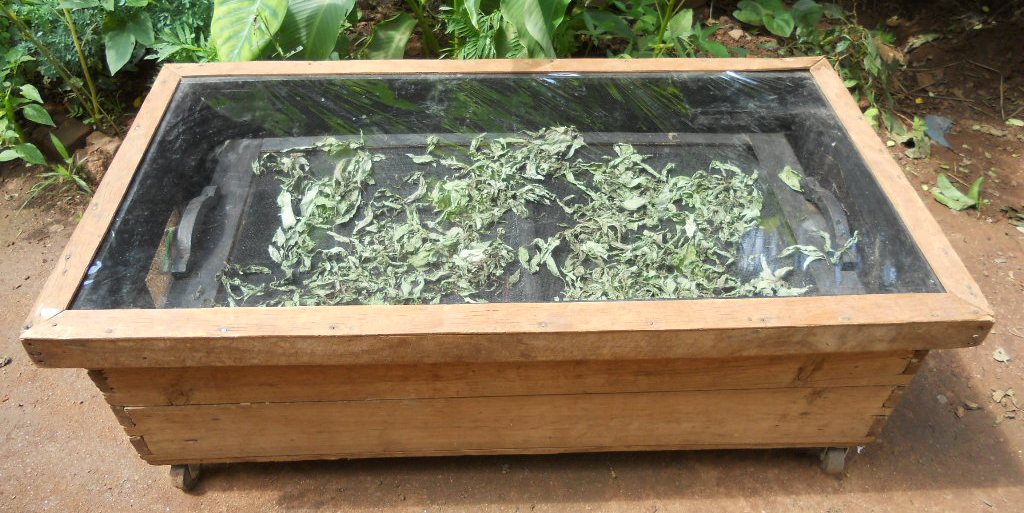
Solar drying is a really fun and easy way to preserve food! It doesn’t entail expensive equipment, great amounts of preparation, or cumbersome labor-intensive processing. And, it works anywhere that has sun…like earth!
The benefits of solar drying are many. In times of surplus it can help to extend food security long into the times of the year when there might not be as much available. This is great for areas that have a long dry-season, or areas that have cold-seasons where plants may be dormant. Solar dryers also help to improve the hygiene involved in food processing as they tend to be enclosed structures that keep flies and dirt from contaminating the food. And finally, we have read through various studies that, when done correctly, food that has been solar dried can retain from 50%-80% of its nutrients.

All solar driers basically work on the same principles. Once you have learned these principles you can set your imagination free to come up with all sorts of creative or artistic designs. These principles are as follows:
1.) You will want some type of container with a lid or a covering that will keep insects, dirt, leaves, or other contaminants off of the food. These ‘containers’ can be as small as a bucket or as large as a walk-in room.
2.) You will want some sort of transparency to the cover that you choose. This is generally most easily accomplished through the use of clear plastic or glass. This clear covering will help to create a ‘greenhouse’ effect in which the sun’s rays will enter the container and then be captured inside, helping to raise the temperature. We have seen driers that have been made with the sheer netting as a cover, such as what one might find being used for mosquito nets or window screens. This works fine for keeping things off the food, but you will be sacrificing the advantages of the ‘greenhouse’ temperatures.
3.) Another helpful method of helping to raise the temperature inside the container is to paint the inside black, or another dark color. Dark colors help to absorb the heat and hold it for longer. We have experimented with different types of berries (mulberries & ‘climbing spinach’ seeds), but so far paint has still proven to be the best and the easiest that we have found. Remember if you try to use something like charcoal or other items to make a dark color that it may give off certain fumes that can taint the taste of the food that is being dried. But don’t let that stop you from experimenting! If you find something that works well please let us know so that we can implement and pass on the ideas to others.
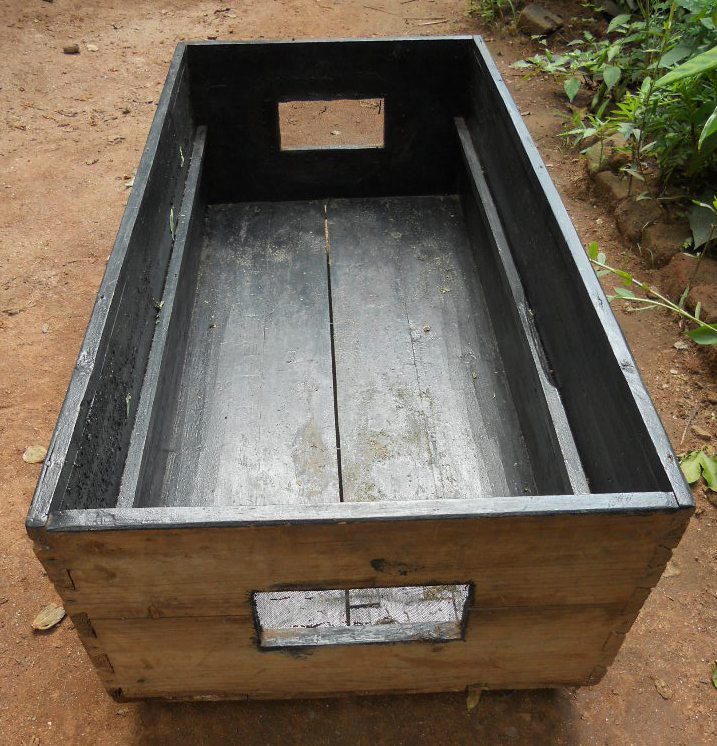
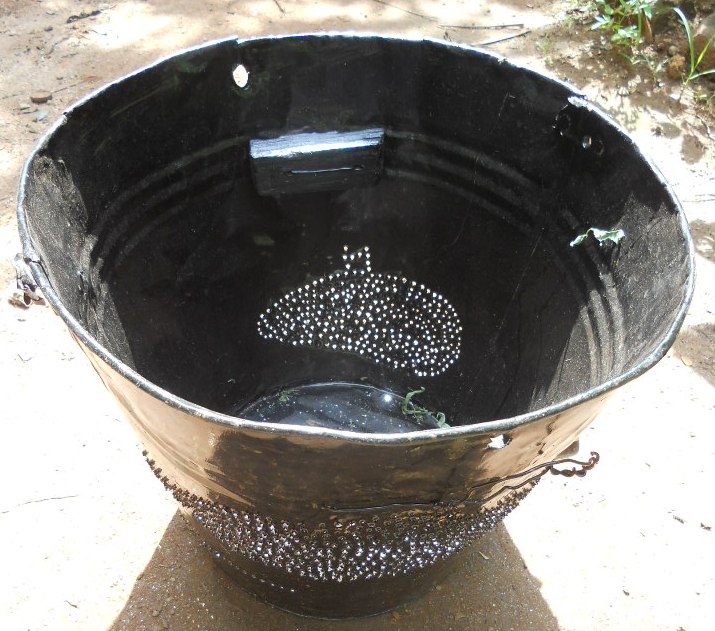
4.) The whole point of solar drying is to raise the temperature inside of the container enough to draw the moisture out of the food. This water, however, needs somewhere to go once it leaves the food. On a good solar drier you will probably see water beginning to condense on the bottom of the lid after the food has been placed inside, but these driers should also contain vents to allow that moisture to blow out of the container. If the water seems to be condensing and dripping back onto the food then your vents may not be big enough, and if you are trapping all the heat without allowing for some ventilation then you are beginning to use the principles of a solar ‘cooker’ instead of a drier. Hot air rises, so you can place one vent on a low end of the container and another on the high end, this will allow cooler air to circulate in from the bottom, flow through the food, and vent the hot/moist air out the top.
5.) You want to make sure that the air can ‘flow’ through and around the food that you place in the container and this can be done by making some sort of mesh or screened tray. We usually use black plastic window screening because this is easy to wash off and prevents rusting, but we have also seen people use loosely woven bamboo trays, reed mats, or any other surface that is porous enough to allow for the airflow.
That’s about it! Now you can start to experiment with various types of foods. Drying times will vary and they depend on a couple of factors. The more water content that a food has the longer it will take to pull that water out of the food. Items such as mangoes, bananas, tomatoes, or apples may take 2-3 days, depending also on how hot your sun is or how overcast the sky may be. Other items such as onions, papayas, or spices may only take a day or two. Green vegetables tend to be very quick and if they are not over-loaded on the drying tray, they can sometimes be done in just a matter of a few hours. (We often put a load of vegetable leaves in the drier in the morning and by noon on a sunny day they are ready for storage). Mushrooms are great for drying as they have very little water in them and they will last for well over a year when dried properly.
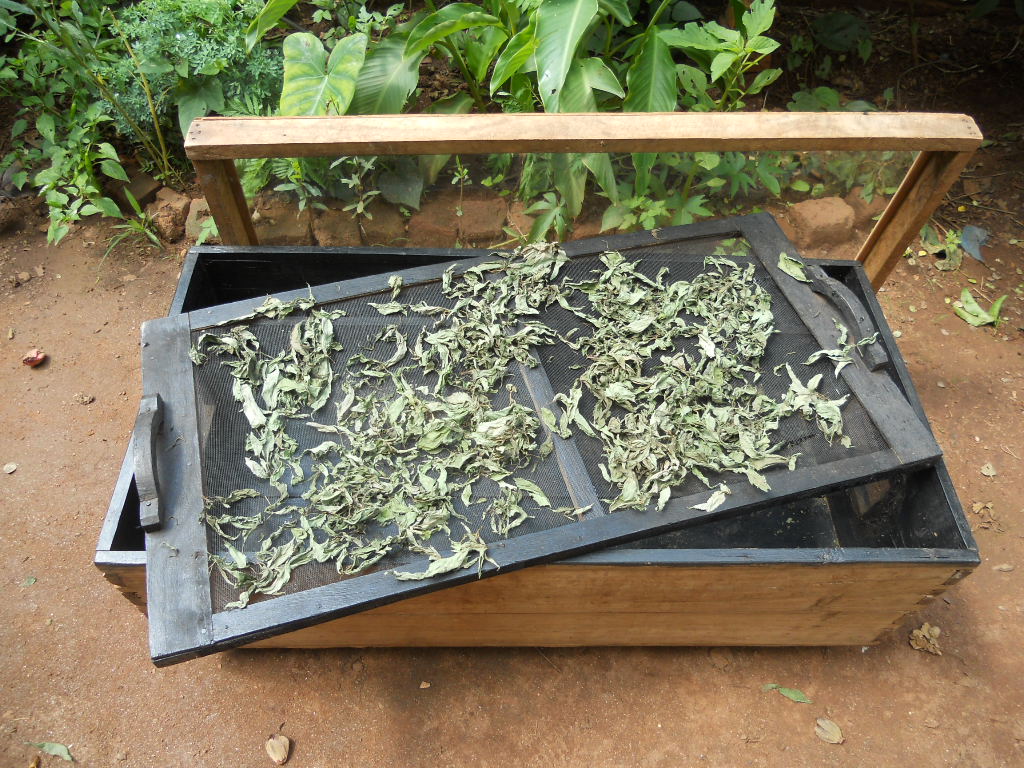
It is often best to slice the food before putting it on the tray. Something like a tomato may need to be sliced fairly thickly since once the water comes out there is not very much left. Mangoes are good to get just as they are turning from green to mature; a bit firm and not overly ripe. If they are too ripe the sugars have a tendency to ‘burn’ causing the fruit to turn black. Bananas, apples, and other foods that naturally turn brown when exposed to air can be kept white by giving them a ‘dip’ in any type of citrus juice (i.e. lemon, orange, grapefruit, etc.) Carrots, onions, and spices can all be cut into smaller pieces before drying and then combined to make great ‘instant’ soup mixes, camping provision, or ready-mix spice packets.
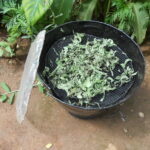
For storing dried foods generally a sealed container that is kept in a cool, dry place is the best. Reused glass jars, plastic containers, zip-locks, or old bread bags all work well, just watch a bit and make sure that you don’t see any moisture forming on the glass or plastic after the food has been dried, as this is an indication that it may need to stay in the drier a bit longer. For dried vegetables, teas, or spices even paper bags or other ‘breathable’ containers are fine. In Malawi it was customary to store dried vegetables in a container called a ‘chikwatu’ which was made of tree leaves, shaped about the size of a football (soccer ball), and hung from the ceiling.
